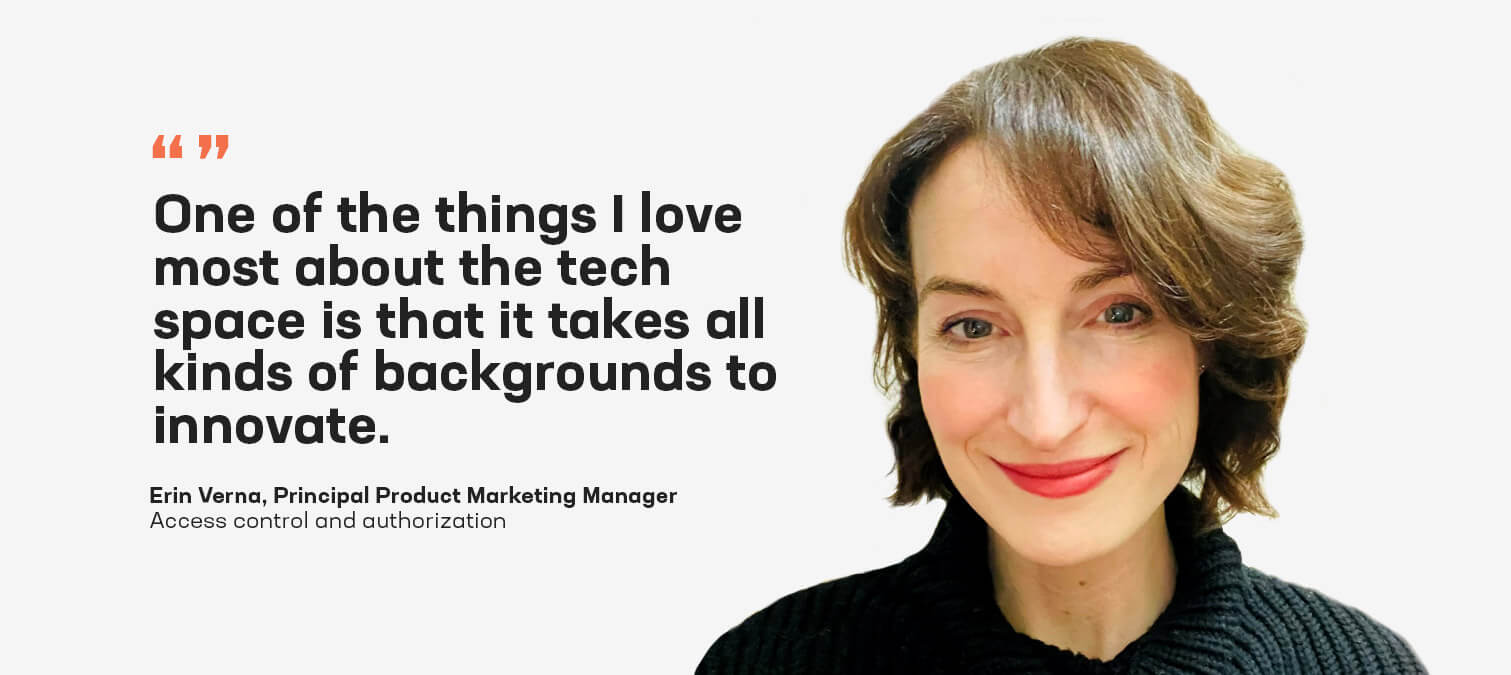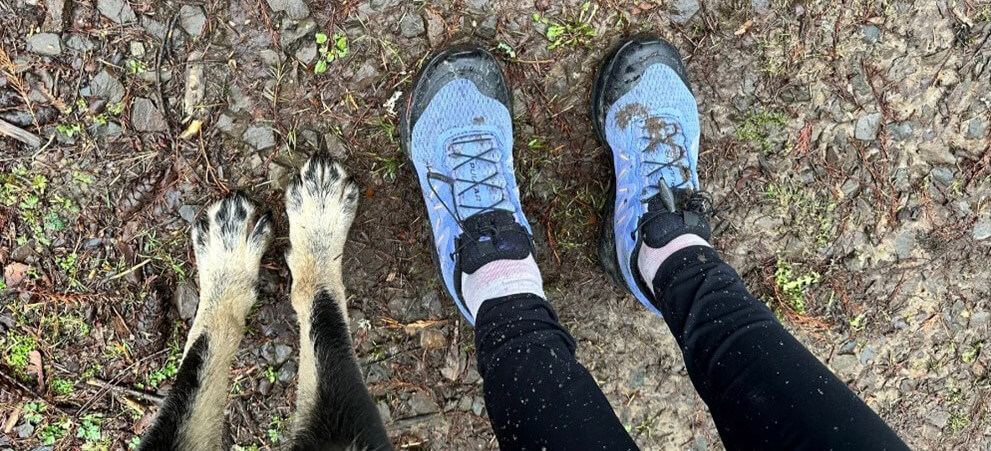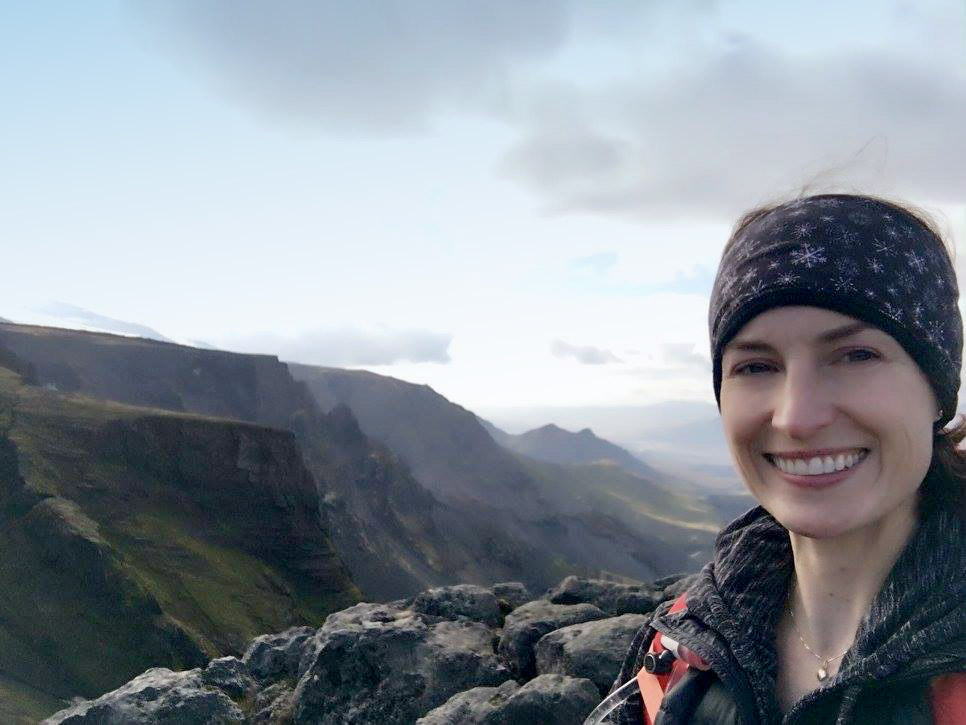성평등을 향한 여정: 사이버 보안에서 다양성의 중요성에 대한 에린 베르나와의 Q&A
RSA 컨퍼런스 2023이 코앞으로 다가온 가운데(부스 N-5435에서 F5를 만나보세요 ) 사이버 보안에서 성별 다양성을 확대해야 할 필요성을 강조하기에 좋은 시기인 것 같습니다. 이 "성평등을 향한 여정" 시리즈에서 저는 F5에서 사이버 보안 분야에서 일하는 여성과 소수 성 정체성을 가진 개인에게 주목하고 있습니다. 그들이 어떻게 지금의 자리에 오르게 되었는지, 남성이 주도하는 분야에서의 그들의 경험과 다른 사람들에게 주는 조언에 대해 이야기합니다.
두 번째 면접에서는 F5의 수석 제품 마케팅 관리자인 에린 베르나 를 만났습니다. 그녀는 액세스 제어와 권한 부여를 담당합니다.
에린은 앱 보안 분야에 약 8년, 기술 분야에는 15년 이상 종사했습니다. 그녀는 직장을 쉬는 시간에는 강아지 스텔라와 함께 산길을 달리며 야외 활동을 즐깁니다. 그녀의 음악에 대한 열정 덕분에 그녀는 수년에 걸쳐 지역 심포니에서 연주를 계속할 수 있었고, 새로운 나라를 탐험하는 것을 좋아하는 에린은 매 여행마다 야외 모험, 놀라운 거리 예술, 맛있는 음식을 중심으로 여행을 계속합니다.
레이첼: 제 가족과 친구들은 모두 처음부터 어떤 직업을 가고 싶은지 알고 있었지만 저는 그 반대였습니다. 어떻게 사이버 보안 분야에서 경력을 시작하게 되었나요? 무엇이 당신을 끌어들였나요?
에린: 사실, 저는 기술 분야에 빠졌습니다. 하지만 저는 이 분야에 얼마간 종사한 뒤 사이버 보안에 집중하기 위해 노력했습니다. 끝없이 매혹적인 공간이에요. 저는 대학에서 저널리즘을 공부했는데, 항상 새롭고 흥미로운 주제에 대해 배우고 글을 쓸 수 있기를 바랐습니다. 졸업하고 첫 취직 제안은 작은 소프트웨어 회사에서 카피를 쓰는 것이었습니다. 여러 직업 기회를 거쳐 클라우드 컴퓨팅에 대한 글을 쓰게 되었고 결국 대규모 기술 회사에서 보안 메시징과 포지셔닝을 전문으로 다루게 되었습니다. 앱 보안에는 많은 것이 걸려 있으며, 사람들에게 더 나은 결과를 가져다주는 업계에 참여하는 것은 대단한 일입니다. 게다가 보안 커뮤니티는 그 자체로 흥미로운 사람들로 구성된 집단입니다.
레이첼: 정말 그렇죠. 여러 면에서요. CISA는 최근 사이버 보안 분야의 성별 격차를 해소하기 위해 Women in CyberSecurity와의 파트너십을 발표했으며 , 향후 7년 내에 해당 분야에서 여성과 소수 민족의 비율을 50%로 높이는 목표를 세웠습니다. 여성으로서 사이버 보안 분야에서 일하는 것은 어떤가요?
에린: 어려움이 없었다고 하면 거짓말이 될 겁니다. 제가 오늘 앉아 있는 곳은 10년 전에 시작했을 때와 비교해 보면 많은 개선이 있었습니다. 여성 리더들이 더 많아지는 걸 봅니다. 그리고 다양성과 포용성에 대한 강조점도 더 커졌습니다. 저는 우리가 형평성 측면에서 더 나은 방향으로 나아가려고 노력하고 있다고 말하고 싶습니다. 하지만 물론 개선의 여지는 있습니다. 나는 최근에 다음 기사를 읽었습니다. 레지스터 라고 불리는, 사이버 보안 분야에 여성은 어디에 있는가? 연구에 따르면 어두운 면도 있다 . 이 기사에서는 사이버범죄 포럼 사용자의 최소 30%, 아니 그 이상이 여성이라는 주장을 뒷받침하는 연구를 강조했습니다. 기사에 따르면 블랙햇 세계는 더 '실적 중심적'일 수 있다고 합니다.
레이첼: 흥미롭고, 여성과 보안에 대해 확실히 새로운 시각을 제시해줍니다. 왜 업계에 다양성을 구축하는 것이 그렇게 중요하다고 생각하시나요?
에린: 제가 기술 분야에서 가장 좋아하는 점 중 하나는 혁신을 이루려면 다양한 배경이 필요하다는 것입니다. 어떤 사람은 공학 분야에서 경력을 쌓았을 수도 있고, 어떤 사람은 저처럼 글쓰기 분야에서 경력을 쌓았을 수도 있습니다. 보안업계에 종사하기 전에 군에서 복무한 사람들도 있을 수 있습니다. 사이버보안에 대한 접근 방식은 다양합니다. 이런 다양한 삶의 경험은 모두 매우 소중합니다.
기술은 사용자와 전체 커뮤니티에 광범위한 영향을 미치기 때문에 이러한 다양한 관점이 필요합니다. 단 하나의 기준틀로만 이루어질 수는 없습니다. 다양한 관점을 모두 갖춘 구성원들의 관점에서 해결책을 개발하지 않는다면, 어떻게 대규모의 다양한 인구 집단의 문제를 성공적으로 해결하거나 환경을 개선할 수 있겠습니까?

레이첼: 정말 잘 말씀하셨어요. 정말 좋은 그림이네요. 사이버보안을 다양화하면 모두가 이익을 얻습니다. 보안이 어디로 향하고 있는지 살펴보면, 어떤 사이버 보안 추세가 대규모로 영향을 미칠까요?
에린: 최근 저는 F5의 몇몇 사상적 리더들과 제로 트러스트의 미래에 관해 매우 흥미로운 대화를 나누었습니다. 시장에서 제로 트러스트에 대해 우리가 듣는 것은 "접근성"을 중심으로 한 경우가 많습니다. 그리고 조직들은 나쁜 행위자들이 네트워크에 "침입"하는 것을 방지하는 데 많은 중점을 두고 있습니다. 하지만 제로 트러스트는 접근성을 훨씬 넘어 확장됩니다 . 우리는 이를 "침해 가정"의 제로 트러스트 원칙에서 확인할 수 있습니다. 제로 트러스트 보안 모델은 침해가 불가피하거나 이미 발생했을 가능성이 높다고 가정합니다. 이 원칙이 중요한 이유는 아무리 나쁜 행위자가 "침입"하는 것을 막아도 그들은 여전히 침입할 수 있기 때문입니다. 다시 말해, 접근성이 근본적으로 중요 하지만, 제로 트러스트에 있어서는 접근성이 전부는 아닙니다. 그리고 제로 트러스트 보안 모델은 "침해 가정"을 염두에 두고 설계되어야 합니다. 그렇지 않다면 부정적인 영향이 나타날 확률이 훨씬 높아지고, 그 영향이 더 심각해질 수 있습니다.
AI가 어떤 보안 문제를 야기할지 보는 것도 흥미로울 것입니다. 모두가 ChatGPT에 대해 많이 이야기하고 있으며, 이는 사이버 범죄자들이 공격을 공식화하는 방식과 우리가 이를 탐지하고 대응하는 방식에 확실히 영향을 미칠 것입니다. 주의 깊게 지켜볼 만한 흥미로운 공간이 될 겁니다.

에린은 모험 친구 스텔라와 함께 트레일 러닝을 합니다.
레이첼: 사이버 보안 분야에 종사하는 여성으로서 저는 롤모델, 특히 대표적인 롤모델이 있는 것이 중요하다고 생각합니다. 당신이 존경하는 강력한 여성은 누구입니까?
에린: 저는 아멜리아 이어하트와 마리 퀴리처럼 탐험심이 강한 사람들을 존경합니다. 토니 모리슨 역시 제가 존경하는 여성 중 한 명이다. 내가 항상 좋아했던 그녀의 유명한 인용문 중 하나는 "신뢰와 권력의 위치에 들어서면 생각하기 전에 조금 꿈을 꾸세요"라는 것입니다. 이 글을 공유하는 이유는 이것이 여기 주제에 매우 적합하다고 생각되기 때문입니다. 자신을 제한하지 않는다는 개념은 대신 달성할 수 있는 큰 목표를 설정해야 한다는 것입니다. 제 생각에 뉴질랜드의 전 총리인 재신다 아덴이 이에 대한 좋은 사례입니다. 저는 그녀가 영감을 주는 선구자라고 생각합니다. 특히 그녀가 사람들이 리더가 되도록 격려하고 그렇게 하면서 자신이 진정 누구인지 받아들이도록 하는 방식을 좋아합니다. 그녀는 또한 성공적인 직업과 가정 생활의 균형을 잘 잡는 훌륭한 인물입니다.
레이첼: 정말 대담한 롤모델들이었고, 각자의 방식으로 영감을 주었습니다. 커뮤니티는 사이버 보안 분야에서 여성과 기타 소외 계층을 더 잘 지원할 수 있는 방법은 무엇일까요?
에린: 우리 모두는 불평등을 해소하는 데 각자의 역할이 있습니다. 회의 중에 계속해서 말을 건네는 동료를 옹호하는 것만큼 간단할 수도 있습니다. 임금 평등을 옹호하거나, 조직 내 D&I 프로그램에 참여하거나, Women Who Code와 같은 비영리 단체를 지원하는 것만큼 큰 활동이 될 수 있습니다. 저는 또한 여성 동료 여러분에게도 뒤로 물러나지 말라고 말씀드리고 싶습니다. 주변에 옹호자들을 두되, 항상 자신을 옹호하세요. 자기 주장은 시간이 지나면서 제가 개선해야 할 부분이었습니다. 항상 자연스럽게 되는 것은 아니었습니다. 하지만 연습하면 완벽해질 수 있고, 사람들이 직면한 불평등에 대한 인식이 전반적으로 높아짐에 따라 더 나은 방향으로 변화를 만들 수 있는 기회가 훨씬 더 많아졌습니다.
이 블로그 시리즈의 다른 Q&A
성평등을 향한 여정: 사이버 보안 분야에서 여성의 역량 강화에 관한 Navpreet Gill과의 Q&A
성평등을 향한 여정: 사이버 보안에서 포용성 확대에 대한 Rachel Zabawa와의 Q&A
성평등을 향한 여정: 사이버 보안 분야에서 성공적인 경력을 쌓는 방법에 대한 Jenn Gile과의 Q&A
Angel Grant와 함께 젠더 평등에 대한 솔직한 Q&A로 사이버 보안 인식의 달을 탐험하세요
성평등을 향한 여정: 사이버 보안 분야에서 여성으로서 돌파구를 찾는 것에 대한 Kara Sprague와의 Q&A

